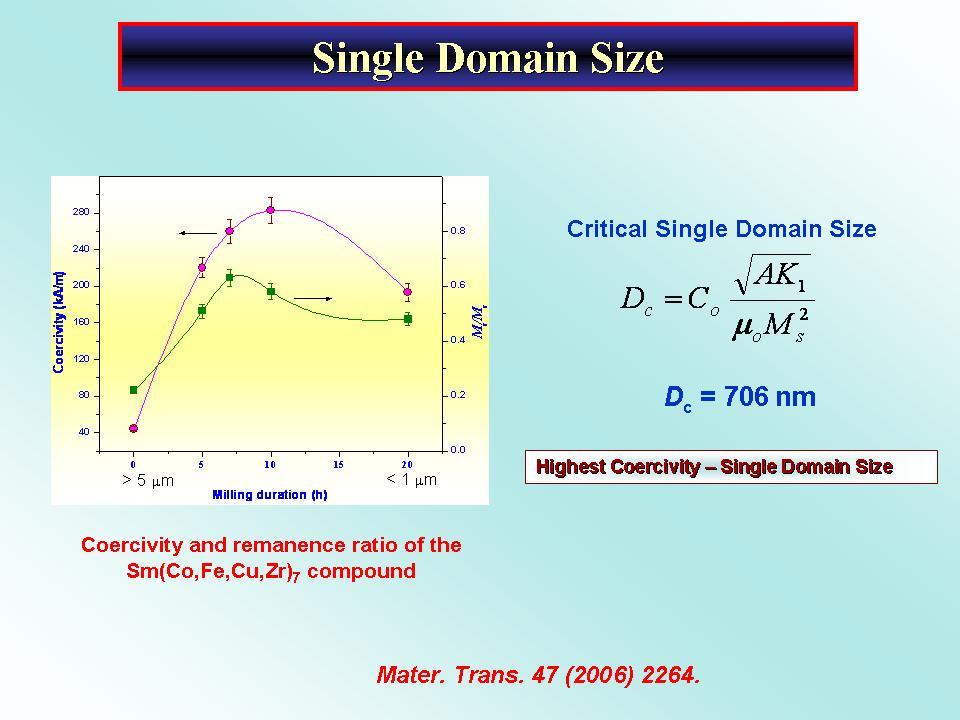Ferrites
Size controlled ferrite nanoparticles are required for a variety of application, Mn-Zn ferrite nanoparticles of various sizes in the range 20-80 nm were synthesised using a modified oxidation method. The critical size for superparamagnetism is found as 25 nm. The Curie temperature is constant and does not vary with size which supports the claim that Curie temperature depends only on the cation distribution and not the size. The anisotropy constant is determined to be 7.79 kJ/m3 which is higher than the bulk (1 kJ/m3).
Garnets
Garnets are important class of ferrimagnetic materials used for high frequency applications. Although the magnetic properties of ferrites by mechanical milling has been studied extensively, there has not been a single study on the change in magnetic properties on mechanical milling. In view of these, bulk garnets were mechanically milled to synthesis the nanocrystalline form of garnets. But the garnets are found to undergo decomposition into orthoferrite and Fe2O3. As the byproducts are nonmagnetic it was able to study the magnetic properties of the garnets. On milling the saturation magnetisation of gadolinium iron garnet increases whereas that of yttrium garnet decreases. The increase in the magnetisation is due to the shift in the compensation temperature on milling. The defects or oxygen vacancies produced by milling are responsible for canted structure resulting in unsaturated magnetisation.
Permanent Magnetic Materials
Exchange coupled Nd2Fe14B/alpha-Fe nanocomposite permanent magnetic materials are found to exhibit a higher theoretical energy product than single phase Nd2Fe14B. The higher energy product is due to the exchange coupling between the alpha-Fe and Nd2Fe14B phases which combines the higher saturation magnetisation of Fe and higher anisotropy of Nd2Fe14B. However practically not even the energy product of single phase magnets is achieved. Various factors are found to influence the exchange coupling phenomena such as grain size, homogeneity, etc. It was also found that the exchange coupling is affected by the grain boundary anisotropy which is verified by Henkel plot studies.
Sm-Co permanent magnetic materials are suitable for high temperature applications due to their high Curie temperature and anisotropy. However the anisotropy constant of the material depends on the phases of the Sm-Co material which exists as SmCo7, Sm2Co17, SmCo5 etc. We have studied the magnetic properties of the Sm-Co permanent magnetic material with the TbCu7 structure. On milling, the coercivity increases upto the single domain size of 706 nm.
